Exhibition review: Damien Hirst’s greatest hits in formaldehyde
‘Natural History’ at Gagosian Britannia Street, London is the first-ever show dedicated to Damien Hirst’s iconic formaldehyde sculptures. Chopped-up sharks, flayed innards, six-limbed cows – why do we keep returning for another slice?
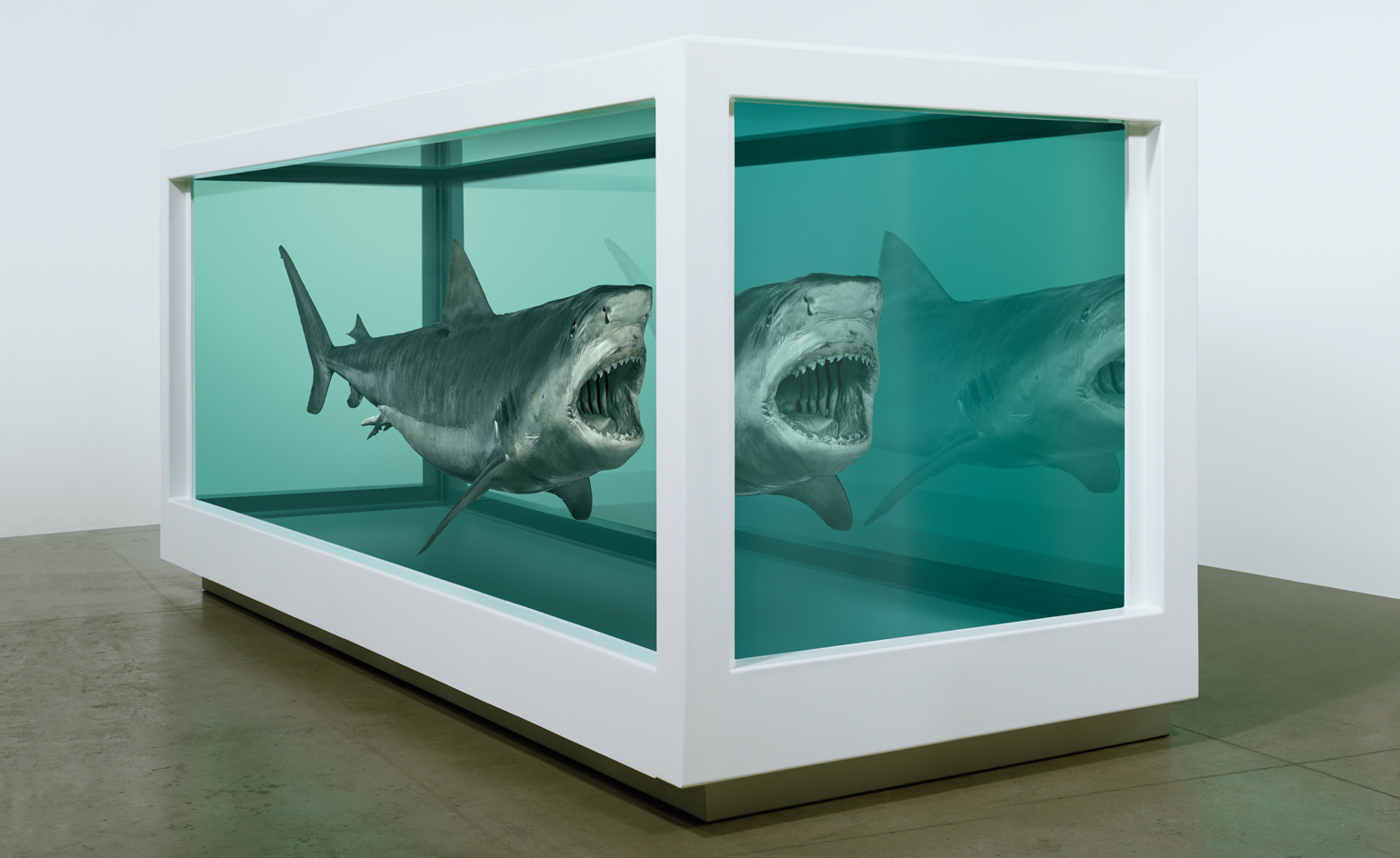
We don’t do star-rated exhibition reviews at Wallpaper*. But if we did, we might need to break Damien Hirst’s ‘Natural History’ down a bit.
For ‘shock factor’, it might get a two; this is hardly Hirst’s formaldehyde foray. The show features one recent work, School Daze (2021), a rotating, multipart mobile of individually-pickled fish. It’s a more subtle intervention than the sliced and diced carcasses that surround it, but top marks for the pun.
More shocking perhaps was Hirst’s recent flurry of Cherry Blossom paintings, mainly due to their distinct lack of shock factor. ‘Natural History’, spanning 30 years of Hirst’s greatest hits in preservation, is a reminder of why the YBA icon pricked our ears up in the first place. This is prime-cut Hirst: unflinching and notorious.


Damien Hirst: ’Natural History’, installation view, 2022
We pity Cain and Abel (1994), who form the welcome party to this show: two black-and-white calves whose youthful buoyancy has been frozen in blue-tinged fluid since Blur released Parklife. Alive, but definitely not living.
Further in, This Little Piggy Went to Market, This Little Piggy Stayed at Home (1996) is another sorry, albeit anatomically fascinating sight. You might remember the nursery rhyme, you might not remember the part where the piggy was chopped in half.
Through saggy-eyed sharks, bowel-like sausages, flayed innards, six-limbed cows, miscellaneous fish, upside-down sheep and Hunterian Museum-esque jarred organs, we find the most startling diorama of all: The Beheading of John the Baptist (2006). It’s not the candy-coloured knives that get you. It’s not even the decapitated cow head perched on the butcher’s block or the clinical, white-tiled floor on which the rest of its body is strewn. It’s a clock that looms above the execution scene in suspended reality. Time of death: 11:53.
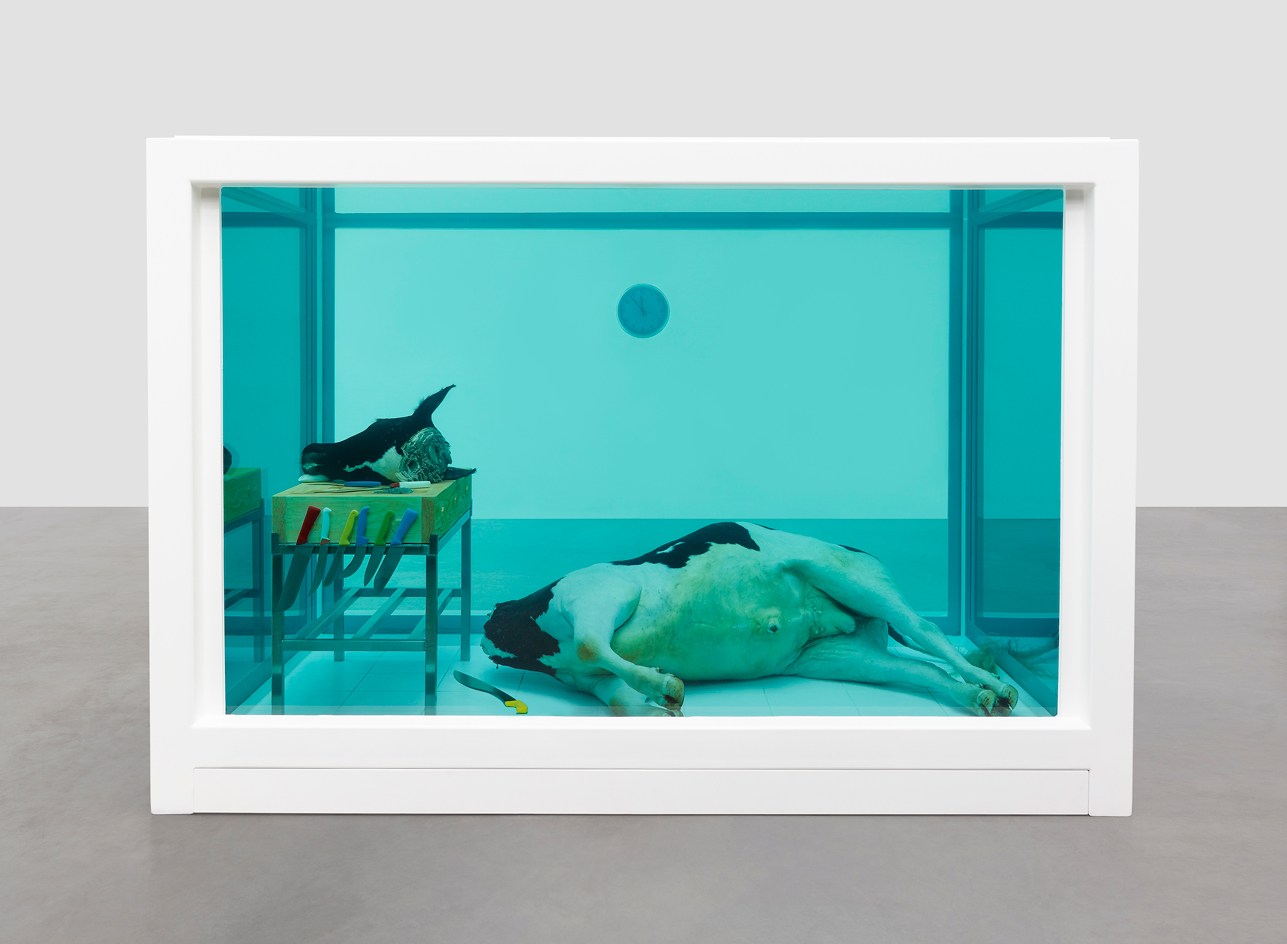
Damien Hirst, The Beheading of John the Baptist, 2006, Glass, painted stainless steel, silicone, ceramic floor tiles, stainless steel, resin butcher’s block, knives, machete, chain mail glove, cow, and formaldehyde solution.
For ‘vegan friendliness’, the show would get a one (unless of course, a no-star option is available). It’s been 31 years since Hirst first dropped jaws with his fourteen-foot, formaldehyde tank-preserved tiger shark. Though veganism was a more fringe affair in 1991, it’s an unavoidable fact of death that for Hirst’s art to live, animals have died, and many people were, and remain, pretty unhappy about it.
Lest we forget the 2010 interview in which musician and animal-rights fanatic Morrissey told the artist Linder that Hirst’s ‘head should be kept in a bag’ for his treatment of animals. Or in 2017, when Hirst’s Venice exhibition was ambushed with manure by an animal rights group, and the many bouts of explosive disdain for his various butterfly massacres. But the use of dead animals in art was hardly invented by Hirst (one need look no further than hog-hair brushes, mashed-insect pigments or bone char paint). The difference here, one could argue, is the stark honesty.

Damien Hirst, The Ascension, 2003. Glass, painted stainless steel, silicone, acrylic, monofilament, calf, and formaldehyde solution.
For ‘timeliness’, it might get a four (and stay with me here). Admittedly, most people have seen one of these carcass-filled tanks before, or at least an image of one. But never in the history of art has London witnessed simultaneous survey shows by Damien Hirst, Francis Bacon and Louise Bourgeois. The city air is pulsating with pungent, visceral animalism, and it’s stifling. Like it or loathe it, flayed, deformed, dissected, crucified bodies (or parts of them) seem to be de rigueur-(mortis), and Hirst’s show plays a leading role.
But why do we keep coming back for another slice? Perhaps Hirst’s formaldehyde sculptures – grotesque as they are poetic – scratch the insatiable human itch for death and mortality. Maybe it’s a comfort to cling onto something as certain as death and tax(idermy).
A lot has changed since Hirst’s first pickle; life was simpler. Now, in a frenzy of pixel domination, immortal meta-selves, technology-powered monotony, and NFT art dropping (to new lows), maybe what we need is a bit of realism to feel alive, even if it is dead, and marinating in a tank.
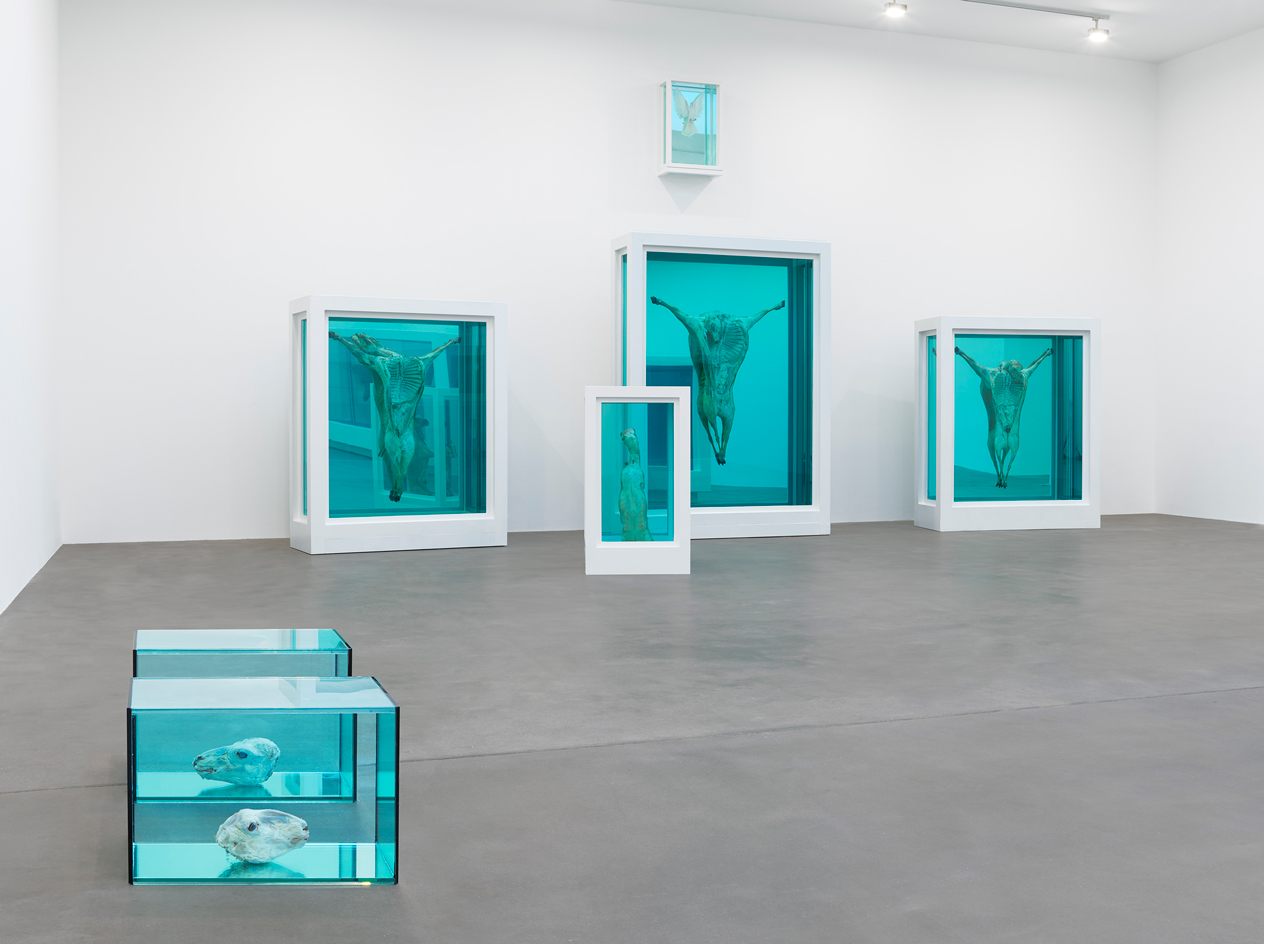
Damien Hirst: Natural History, installation view, 2022.
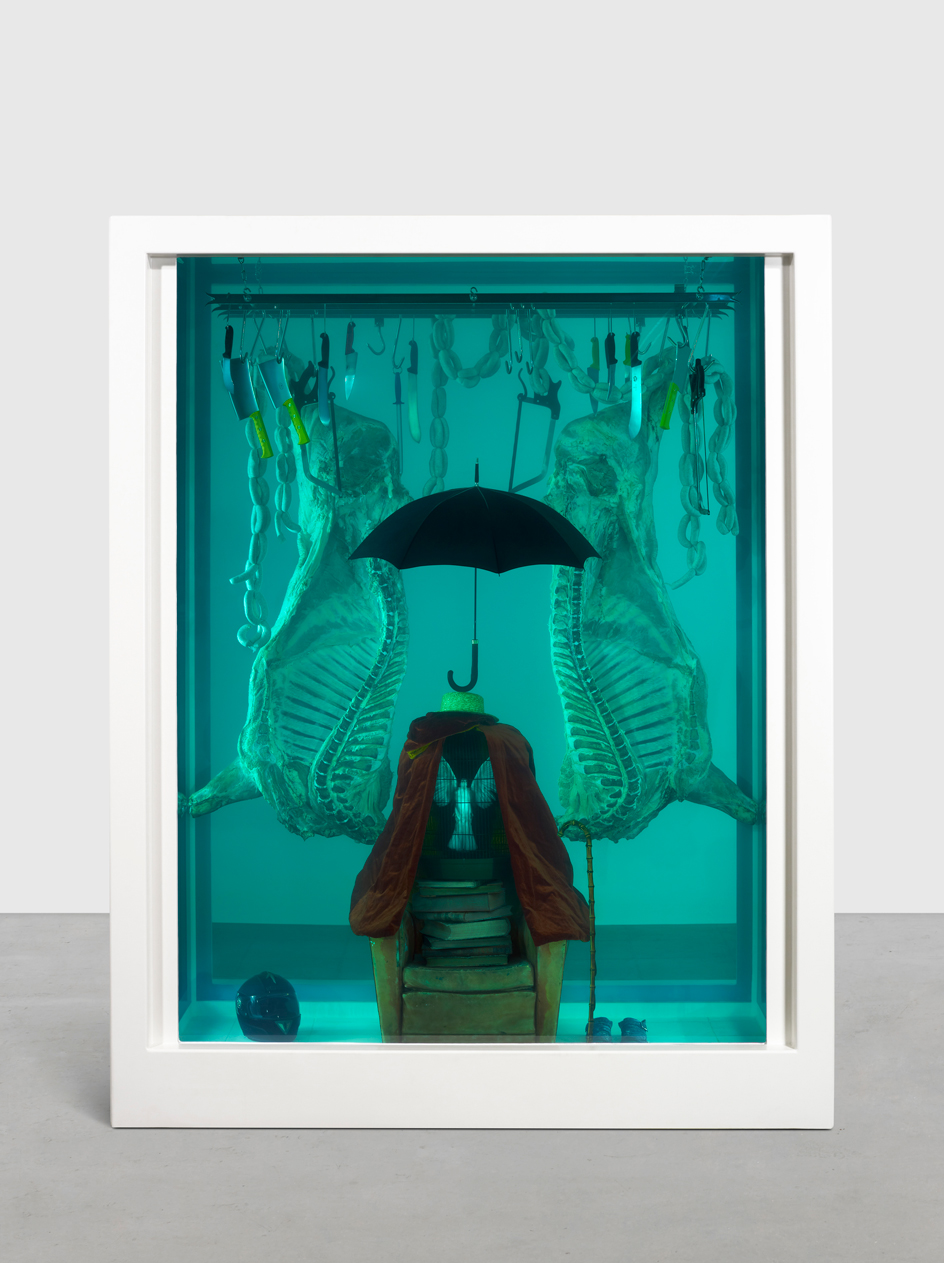
The Pursuit of Oblivion, 2004, Glass, painted stainless steel, silicone, stainless steel butcher’s rack and meat hooks, knives, sharpening steels, cleavers, saws, stainless steel chain, umbrella, resin hat, cloak, bird cage, resin books, resin armchair, resin walking cane, resin shoes, motorcycle helmet, sides of beef, sausages, dove and formaldehyde solution.
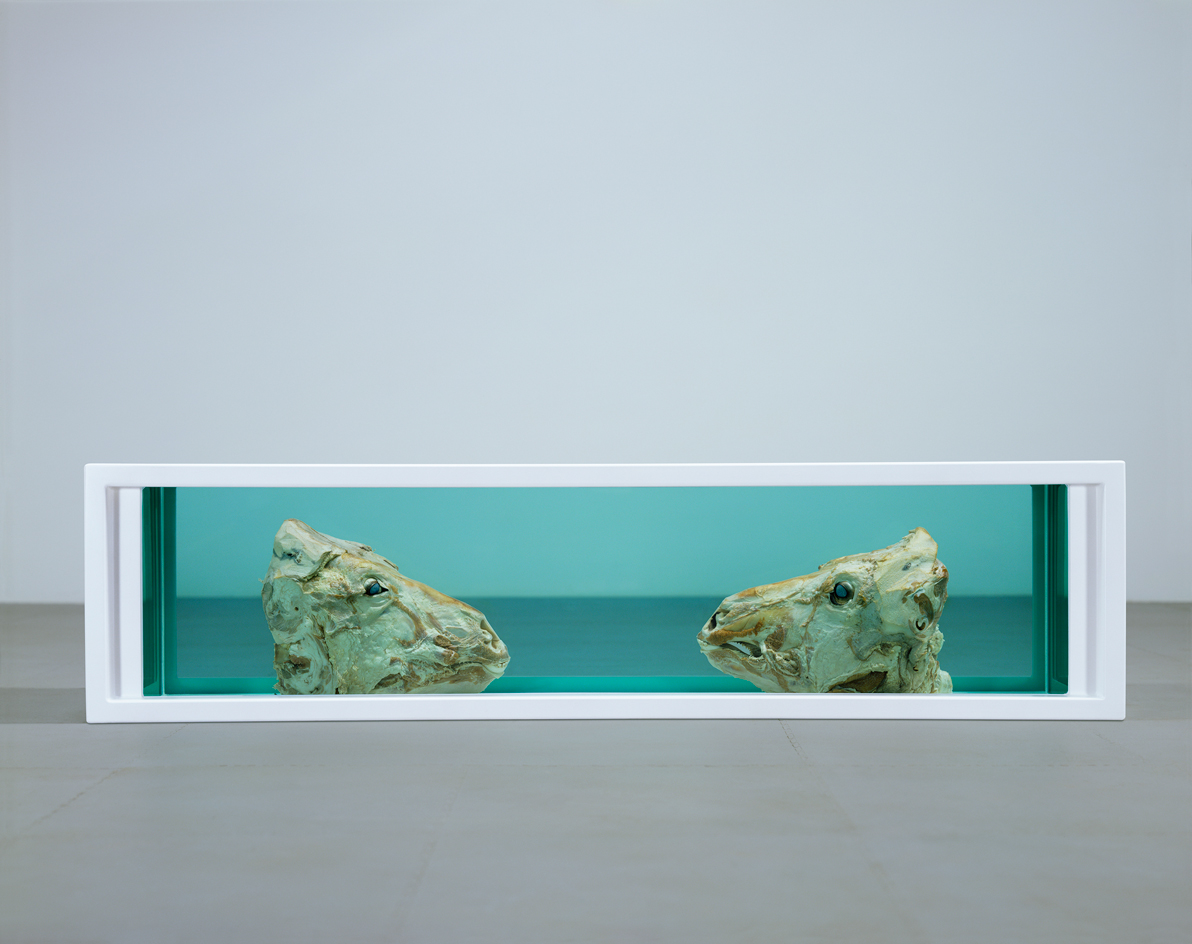
Damien Hirst, Schizophrenogenesis, 2008, Glass, painted stainless steel, silicone, acrylic, cows’ heads, and formaldehyde solution.

Damien Hirst, School Daze, 2021, Stainless steel, acrylic, electric motor, fish, and formaldehyde solution.

Damien Hirst, Shut Up and Eat Your Fucking Dinner, 1997, Steel, glass, formaldehyde, awning and meat products.
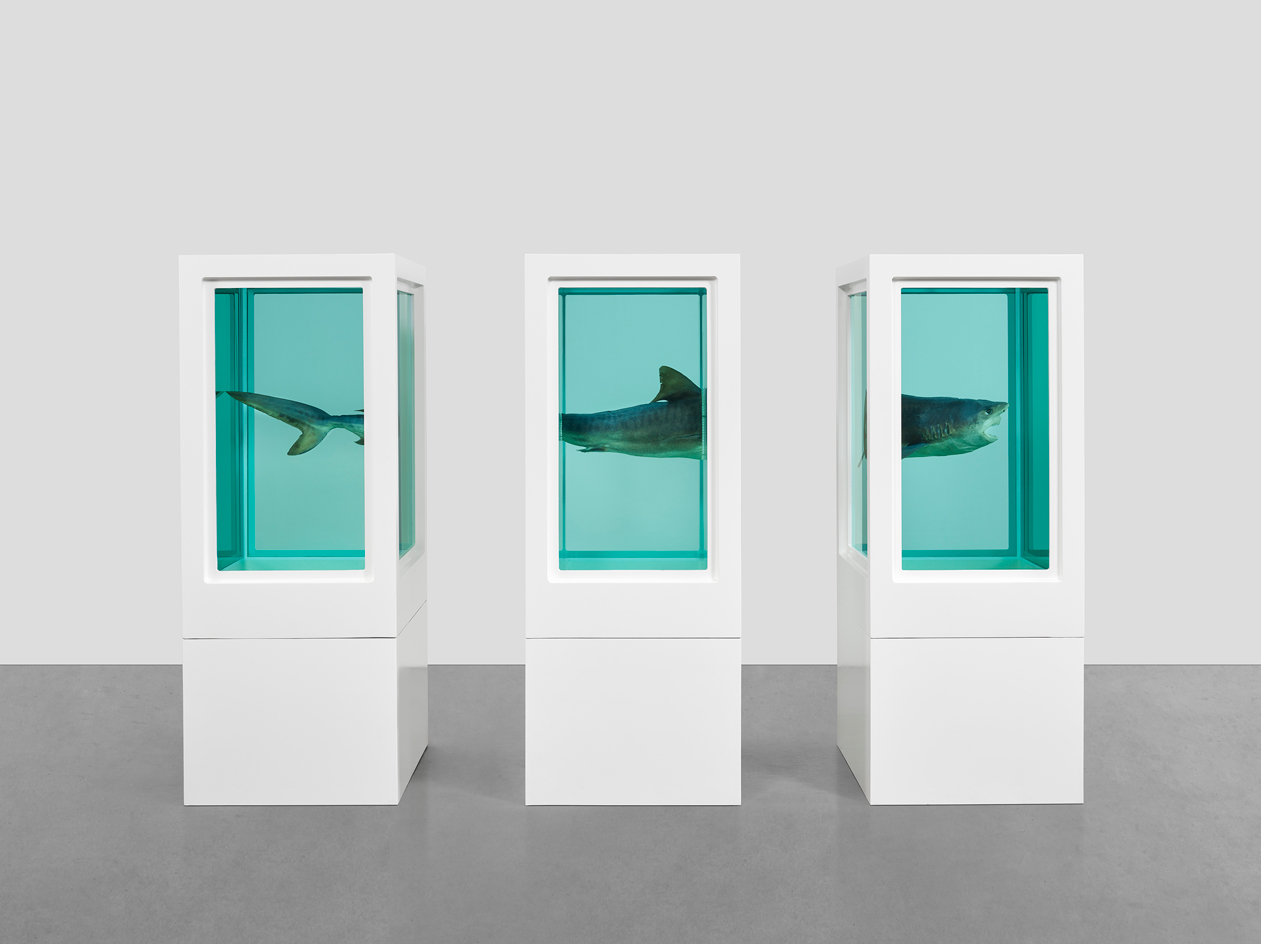
Damien Hirst, Myth Explored, Explained, Exploded, 1993, Glass, painted steel, silicone, monofilament, acrylic, shark, and formaldehyde solution, Triptych.
INFORMATION
Damien Hirst, ’Natural History’ is open from 10 March 2022 at Gagosian Britannia Street. gagosian.com
Receive our daily digest of inspiration, escapism and design stories from around the world direct to your inbox.
Harriet Lloyd-Smith was the Arts Editor of Wallpaper*, responsible for the art pages across digital and print, including profiles, exhibition reviews, and contemporary art collaborations. She started at Wallpaper* in 2017 and has written for leading contemporary art publications, auction houses and arts charities, and lectured on review writing and art journalism. When she’s not writing about art, she’s making her own.
-
 These Guadalajara architects mix modernism with traditional local materials and craft
These Guadalajara architects mix modernism with traditional local materials and craftGuadalajara architects Laura Barba and Luis Aurelio of Barbapiña Arquitectos design drawing on the past to imagine the future
-
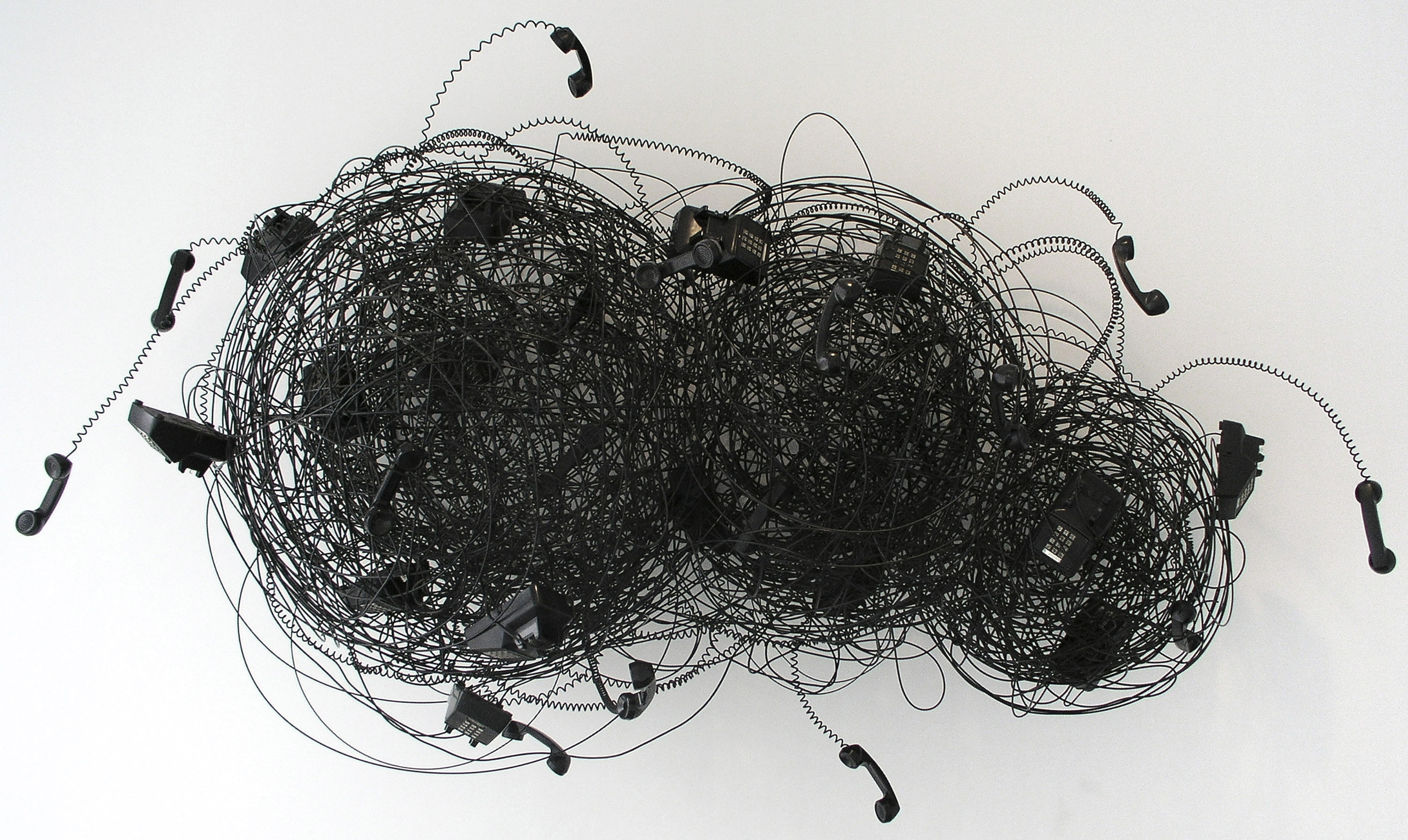 Robert Therrien's largest-ever museum show in Los Angeles is enduringly appealing
Robert Therrien's largest-ever museum show in Los Angeles is enduringly appealing'This is a Story' at The Broad unites 120 of Robert Therrien's sculptures, paintings and works on paper
-
 The Wallpaper* style team recall their personal style moments of 2025
The Wallpaper* style team recall their personal style moments of 2025In a landmark year for fashion, the Wallpaper* style editors found joy in the new – from Matthieu Blazy’s Chanel debut to a clean slate at Jil Sander
-
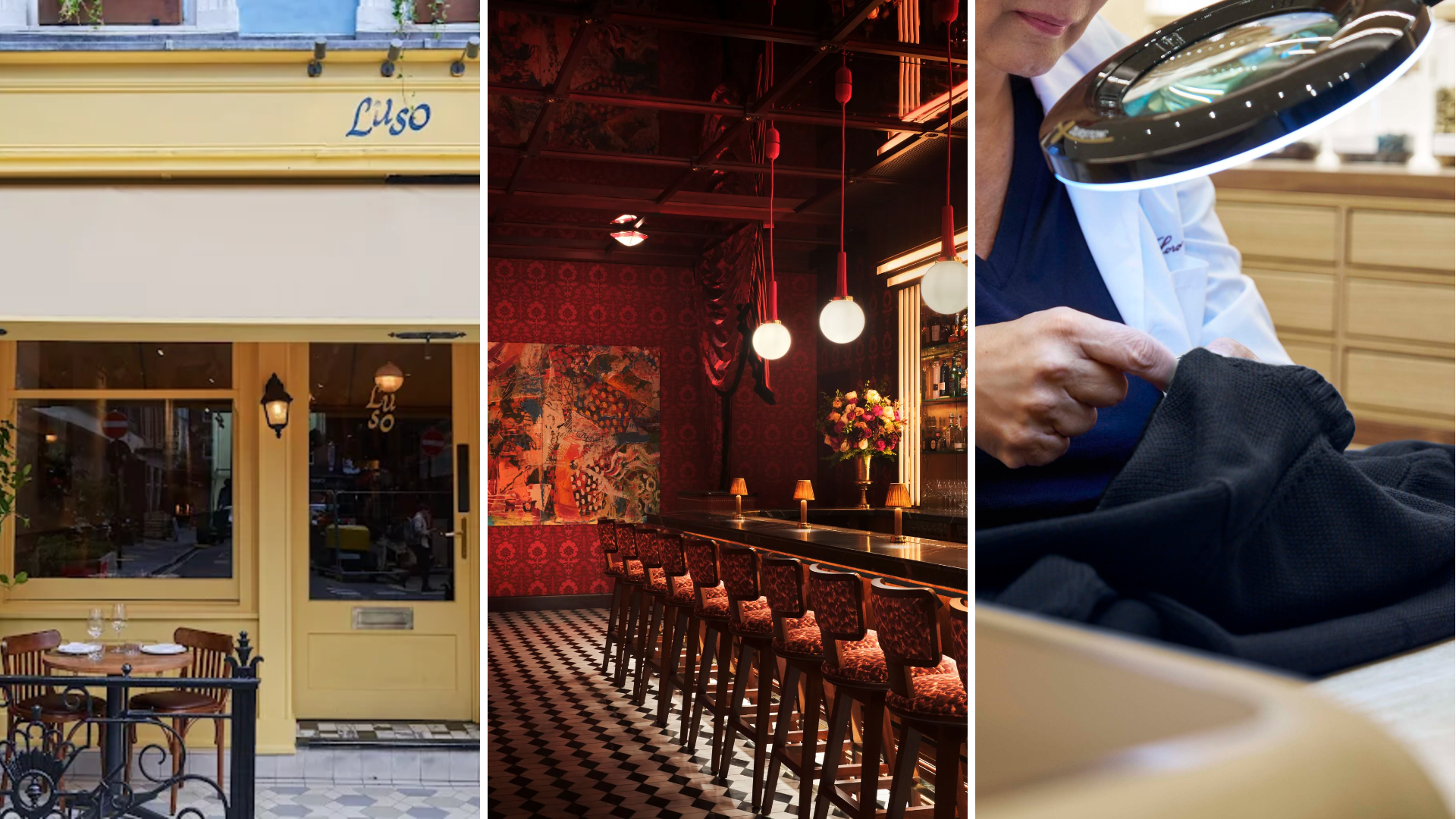 Out of office: The Wallpaper* editors’ picks of the week
Out of office: The Wallpaper* editors’ picks of the week'Tis the season for eating and drinking, and the Wallpaper* team embraced it wholeheartedly this week. Elsewhere: the best spot in Milan for clothing repairs and outdoor swimming in December
-
 Out of office: The Wallpaper* editors’ picks of the week
Out of office: The Wallpaper* editors’ picks of the weekFar from slowing down for the festive season, the Wallpaper* team is in full swing, hopping from events to openings this week. Sometimes work can feel like play – and we also had time for some festive cocktails and cinematic releases
-
 The Barbican is undergoing a huge revamp. Here’s what we know
The Barbican is undergoing a huge revamp. Here’s what we knowThe Barbican Centre is set to close in June 2028 for a year as part of a huge restoration plan to future-proof the brutalist Grade II-listed site
-
 Out of office: The Wallpaper* editors’ picks of the week
Out of office: The Wallpaper* editors’ picks of the weekIt’s wet, windy and wintry and, this week, the Wallpaper* team craved moments of escape. We found it in memories of the Mediterranean, flavours of Mexico, and immersions in the worlds of music and art
-
 Each mundane object tells a story at Pace’s tribute to the everyday
Each mundane object tells a story at Pace’s tribute to the everydayIn a group exhibition, ‘Monument to the Unimportant’, artists give the seemingly insignificant – from discarded clothes to weeds in cracks – a longer look
-
 Out of office: The Wallpaper* editors’ picks of the week
Out of office: The Wallpaper* editors’ picks of the weekThis week, the Wallpaper* team had its finger on the pulse of architecture, interiors and fashion – while also scooping the latest on the Radiohead reunion and London’s buzziest pizza
-
 Out of office: The Wallpaper* editors’ picks of the week
Out of office: The Wallpaper* editors’ picks of the weekIt’s been a week of escapism: daydreams of Ghana sparked by lively local projects, glimpses of Tokyo on nostalgic film rolls, and a charming foray into the heart of Christmas as the festive season kicks off in earnest
-
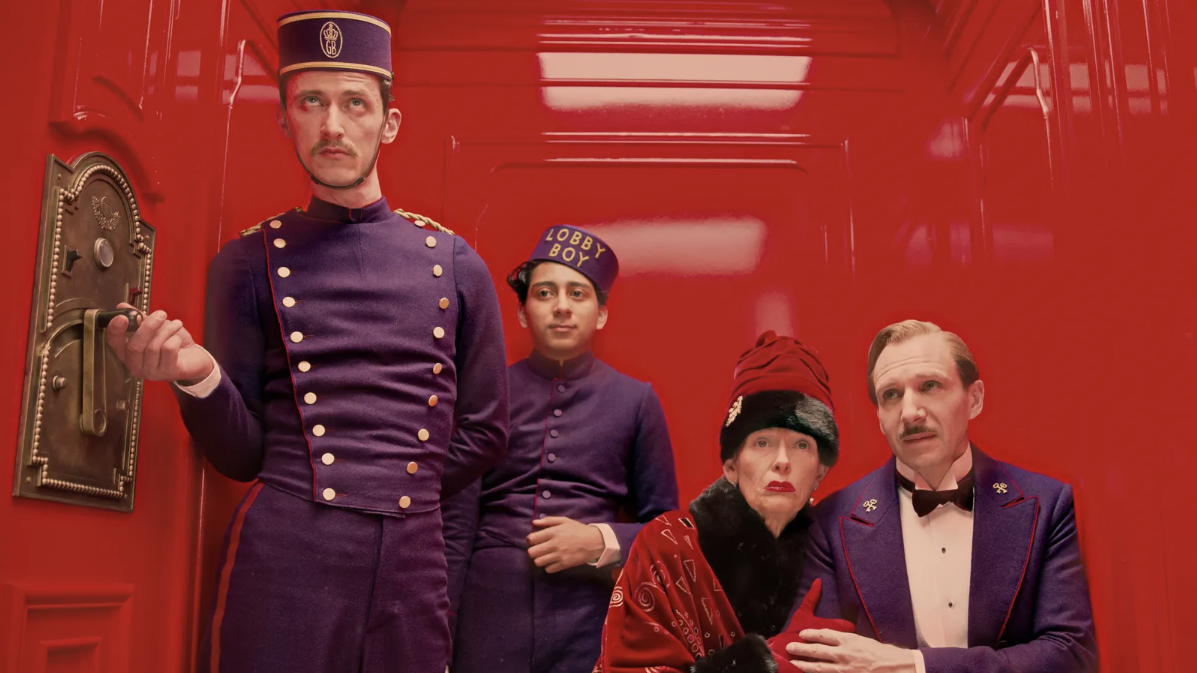 Wes Anderson at the Design Museum celebrates an obsessive attention to detail
Wes Anderson at the Design Museum celebrates an obsessive attention to detail‘Wes Anderson: The Archives’ pays tribute to the American film director’s career – expect props and puppets aplenty in this comprehensive London retrospective